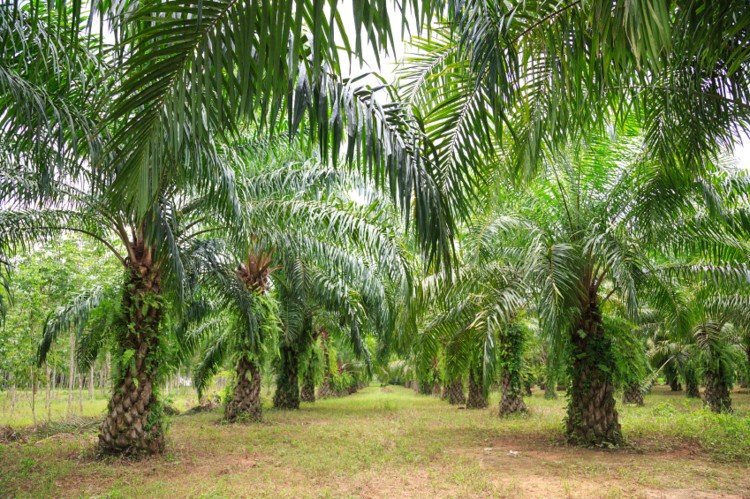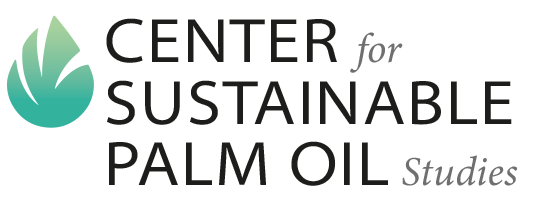
- Palm oil is often associated with deforestation and greenhouse gas emissions, but with global demand for vegetable oil growing, it could be a sustainable solution.
- Cultivating palm oil brings a high yield, with relatively little disruption to indigenous species compared to other oil crops such as rapeseed and soy.
- Emissions can be captured and converted into energy as part of the production process, moving the industry closer to net-zero emissions.
The world’s population will reach 9.8 billion by 2050, with significant growth in the least developed countries. Meanwhile, the amount of arable land per person is shrinking, with a projected decline of 0.38 hectares in 1970 to 0.15 hectares per person by 2050. The world’s consumption of vegetable oils has more than doubled in the past two decades, from 87 million tonnes in 2000/2001 to 208 million tonnes in 2020/2021. This begs the question: how can we produce sustainable vegetable oils to feed the growing world population while safeguarding the natural environment?
Palm oil could be the answer
Palm oil tops the list of oil crops for yield. It requires less than one-eighth as much land as soy to produce the same quantity of oil. Today, palm oil accounts for 6% of all cultivated land for vegetable oils globally; but produces over one-third of the total output.
Apart from the yield advantage, cultivating oil palm leads to relatively less disruption of species’ habitats. Oil palm is a perennial crop, and a typical oil-producing palm tree lives for twenty to thirty years. In contrast, most other large-scale edible oil crops need to be replanted annually, which involves intensive and highly mechanised ploughing, planting, and harvesting. This high level of activity means considerable disruption to indigenous species.
Transitioning towards sustainable production and net-zero
Although palm oil has its positives, it is frequently associated with deforestation and significant greenhouse gas emissions. To address these concerns, the leading palm oil producers, Indonesia and Malaysia, are actively promoting sustainable palm oil production and transitioning to net-zero emissions.
Among other oil crops, such as soybean, rapeseed, and sunflower, palm has the most sustainable standards. The first sustainability industry standard, introduced in 2004, was the Roundtable on Sustainable Palm Oil. This was followed by Indonesian Sustainable Palm Oil and Malaysian Sustainable Palm Oil in 2011 and 2013, respectively. This demonstrates that the industry is taking the steps necessary to improve its sustainability performance.
Deforestation has slowed down
The Indonesian government has issued a moratorium on new forest clearance for activities such as palm plantations or logging. This led to deforestation hitting a historic low in 2020. Meanwhile, as pledged at the 1992 UN Rio Earth Summit, Malaysia will cap palm oil cultivation at 6.5 million hectares and is committed in its effort to maintain a natural forest cover of over 50% of its total land mass. At present, Malaysia’s forest cover is at 55.3% with an area of 18.27 million hectares.
To improve biodiversity and conserve wildlife nationwide, the Malaysian Palm Oil Council launched the Malaysian Palm Oil Wildlife Conservation Fund in 2006. Several programs have already been initiated, including the Wildlife Rescue Unit, which ensures the long-term survival of orangutans. Until 2017, it carried out more than 500 rescue and translocation operations, which included 52 Bornean orangutans.

Emission reduction with methane capture
During the production of crude palm oil, a liquid by-product called palm-oil mill effluent (POME) is generated. POME is regarded as a contributor to global climate change because biogas, which consists mainly of methane, is formed naturally when it decomposes in the absence of oxygen.
Methane, a greenhouse gas with 25 times higher greenhouse gas potential than carbon dioxide, is released directly into the atmosphere if the biogas collection is not controlled well. Fortunately, methane is a renewable energy source for electricity generation, and many palm oil mills are transitioning to net-zero by capturing the biogases produced and converting them into renewable energy.
Palm-oil mills use biogas to generate electricity through gas turbines, either for internal consumption, or to export to national grids, providing electricity to nearby households. This paradigm shift avoids methane emissions into the atmosphere and generates green energy. In 2020, annual biogas production in Indonesia was approximately 56 million cubic metres; while 125 out of 452 oil mills in Malaysia operated a biogas plant. The green energy produced from this initiative has saved approximately 712 kt CO2 per annum.
Carbon reduction with biofuels
POME is a source of biogas and biofuels. Palm sludge oil, a common term used to describe residual oil from POME, is an alternative feedstock for the production of biodiesel and hydrogenated vegetable oil (HVO), which is a completely renewable diesel alternative. Furthermore, POME oil is considered a cheap low-quality oil, and is also classified as a material that is eligible for double accounting of greenhouse gas savings under the EU Renewable Energy Directive (RED) II.
At present, POME oil is a waste feedstock that Neste – a producer of renewable diesel and sustainable aviation fuel – uses to produce biofuels. In 2020, Indonesia and Malaysia produced approximately 1.4 million tonnes of POME oil. If all POME oil produced was used for biofuel production, it would have translated to an energy content of 7.4% of the EU’s total biodiesel consumption in 2019.
It is clear that palm oil could be the answer to fulfilling the world’s increasing oil and fat demands. The palm oil industry has taken bold action to protect the world’s rainforests and its vulnerable biodiversity. The industry is in a good position to start its sustainability journey and embrace net-zero carbon emissions. Although the palm oil industry is always criticised for its environmental impacts, it can now rebrand its sustainability story so that net-zero transition is not just possible, but immediately achievable.
By Hong Wai Onn
Original Link: https://www.weforum.org/agenda/2021/08/how-palm-oil-industry-is-transitioning-to-net-zero/


